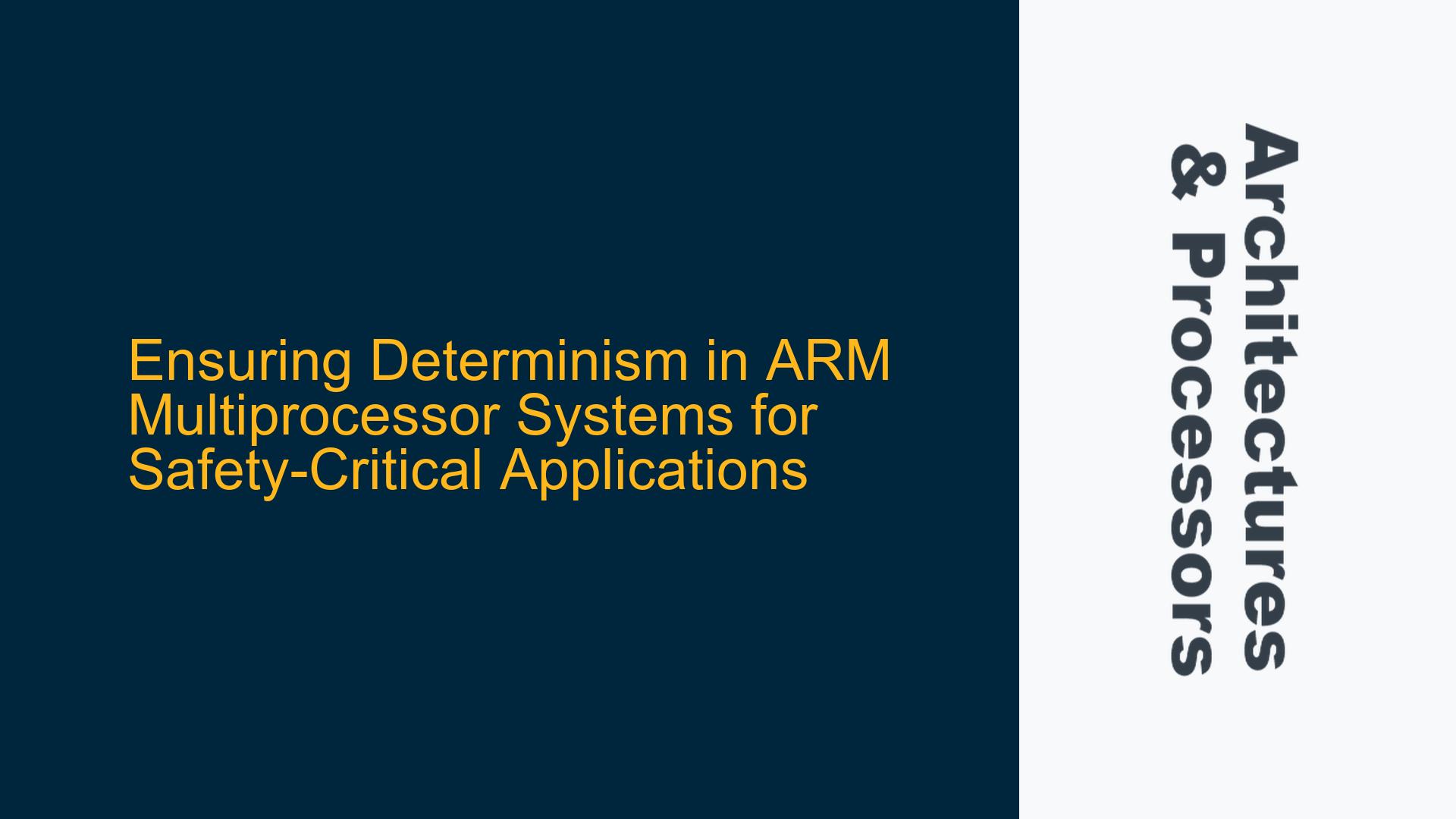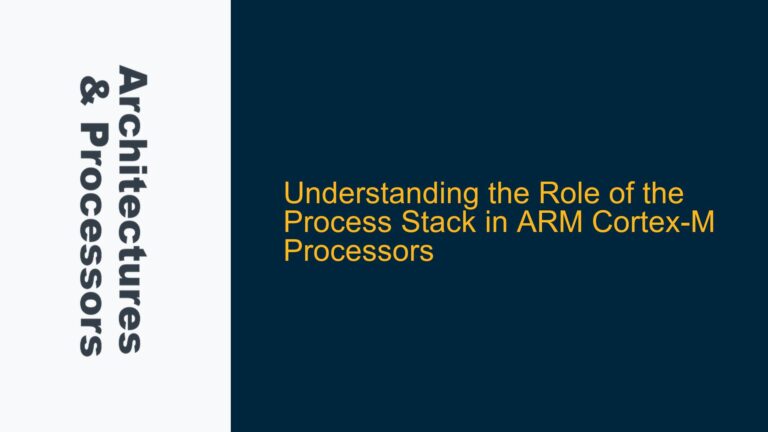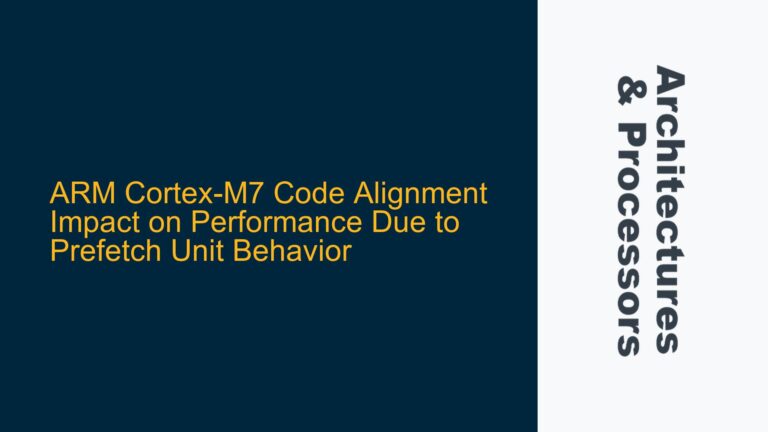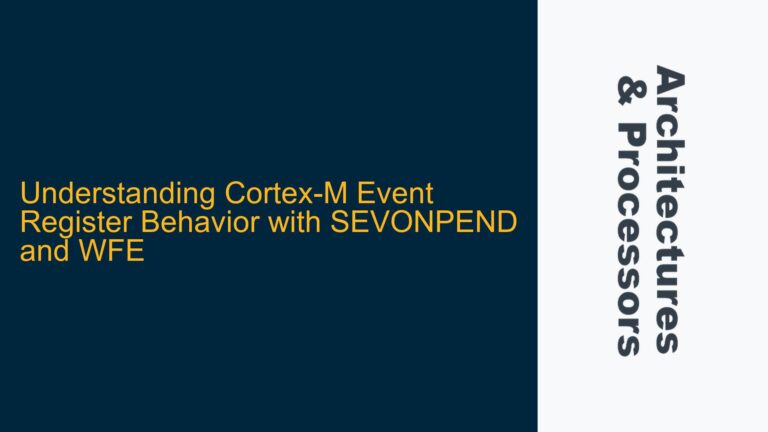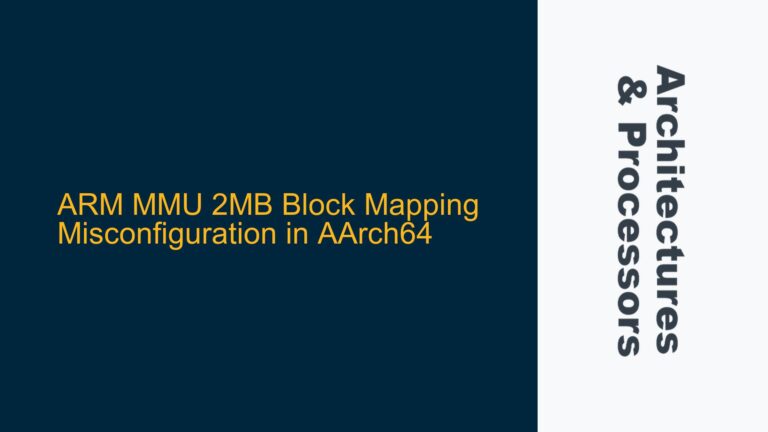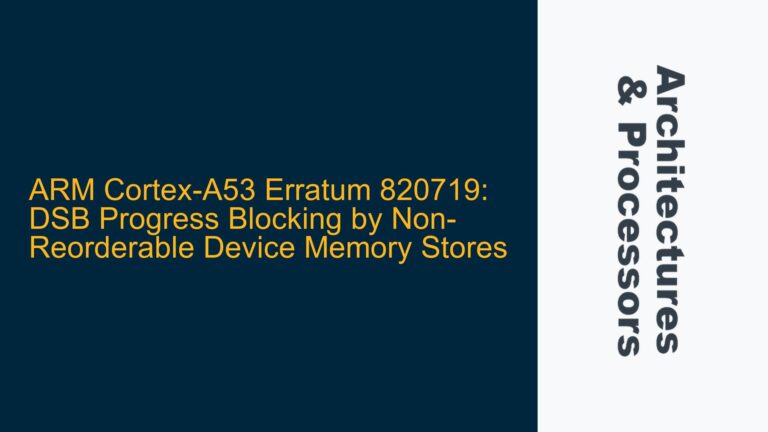Determinism Challenges in ARM Multiprocessor Systems for DO-178C DAL A Compliance
Determinism in embedded systems, particularly in safety-critical applications like avionics, is a non-negotiable requirement. The RTCA DO-178C Design Assurance Level A (DAL A) standard mandates that software must exhibit absolute determinism, meaning that execution times must be perfectly repeatable. This requirement becomes increasingly complex when dealing with modern ARM multiprocessor systems, which introduce variables such as cache coherency, DMA operations, and bus contention. These factors can introduce jitter and non-deterministic behavior, making it challenging to meet the stringent requirements of safety-critical standards.
In single-processor systems, achieving determinism is relatively straightforward. The system can be designed to run "bare metal" with minimal interrupts, and cache management can be tightly controlled. However, in multiprocessor systems, the interplay between multiple cores, shared resources, and peripheral DMA controllers introduces a level of complexity that can undermine determinism. For example, the ARM RP2040, a dual-core Cortex-M0+ microcontroller, offers significant processing power at a low cost but introduces challenges in ensuring deterministic behavior due to its shared memory architecture and DMA capabilities.
The core issue lies in the fact that modern ARM processors are designed for performance and flexibility, not necessarily for deterministic execution. Features like multi-level caches, out-of-order execution, and bus arbitration can lead to variable execution times, which are unacceptable in safety-critical systems. Furthermore, the use of Real-Time Operating Systems (RTOS) adds another layer of complexity, as these systems often introduce scheduling jitter and other non-deterministic behaviors.
Cache Coherency, DMA Contention, and Bus Arbitration as Primary Culprits
The primary sources of non-determinism in ARM multiprocessor systems can be traced to three main areas: cache coherency, DMA contention, and bus arbitration. Each of these factors introduces variability in execution timing, which can be detrimental to the deterministic requirements of safety-critical applications.
Cache Coherency: Modern ARM processors often feature multi-level caches (L1, L2, and sometimes L3) to improve performance. However, these caches can introduce non-determinism if not managed properly. For example, a cache miss can result in a significant delay as data is fetched from main memory. In a multiprocessor system, cache coherency protocols ensure that all cores have a consistent view of memory, but these protocols can introduce additional latency. If one core modifies a shared memory location, other cores must invalidate their cache lines, leading to potential stalls and jitter.
DMA Contention: Direct Memory Access (DMA) controllers are commonly used in embedded systems to offload data transfer tasks from the CPU. While DMA can improve overall system performance, it can also introduce non-determinism. DMA controllers compete with the CPU for access to the memory bus, and the timing of these accesses can be unpredictable. In a multiprocessor system, multiple DMA controllers may be operating simultaneously, further exacerbating contention and leading to variable execution times.
Bus Arbitration: In a multiprocessor system, multiple bus masters (CPUs, DMA controllers, etc.) compete for access to shared resources such as memory and peripherals. The arbitration mechanism that determines which master gets access to the bus can introduce delays and jitter. For example, if a high-priority DMA transfer is in progress, a CPU may be forced to wait for several cycles before it can access memory. This variability in access timing can lead to non-deterministic behavior in the system.
Strategies for Achieving Synthetic Determinism in ARM Multiprocessor Systems
Achieving determinism in ARM multiprocessor systems requires a combination of hardware and software strategies. These strategies aim to mitigate the sources of non-determinism while maintaining the performance benefits of multiprocessing. Below, we explore several approaches to achieving synthetic determinism in ARM-based systems.
1. Cache Management and Flushing: One of the most effective ways to reduce cache-related non-determinism is to carefully manage cache usage. In safety-critical sections of code, it may be necessary to disable caches entirely or flush them before entering a critical section. This ensures that all data is fetched directly from main memory, eliminating the variability introduced by cache misses. However, this approach comes at the cost of reduced performance, as cache accesses are significantly faster than memory accesses. In some cases, it may be possible to use cache locking mechanisms to pin critical data in the cache, ensuring that it is always available without the risk of eviction.
2. DMA Scheduling and Prioritization: To mitigate DMA-related non-determinism, DMA transfers should be carefully scheduled and prioritized. One approach is to use a time-triggered architecture, where DMA transfers are performed during specific time slots, ensuring that they do not interfere with critical CPU operations. Additionally, DMA controllers can be configured to operate at lower priorities than the CPU, reducing the likelihood of contention. In some cases, it may be necessary to disable DMA entirely during critical sections of code, although this can impact overall system performance.
3. Bus Arbitration and Memory Access Control: To address bus arbitration issues, it is important to carefully configure the bus arbitration mechanism to prioritize critical CPU operations. This may involve setting higher priorities for CPU accesses or using a round-robin arbitration scheme to ensure fair access to the bus. Additionally, memory access patterns should be optimized to minimize contention. For example, placing frequently accessed data in tightly coupled memory (TCM) can reduce the need for bus accesses, improving determinism.
4. Core Isolation and Synthetic Determinism: In some cases, it may be necessary to isolate one or more cores to achieve synthetic determinism. This involves disabling all but one core during critical sections of code, effectively turning the multiprocessor system into a single-processor system for the duration of the critical section. While this approach can reduce overall system performance, it ensures that the critical section executes with absolute determinism. After the critical section completes, the other cores can be re-enabled, allowing the system to resume multiprocessing.
5. Use of AMP and Hypervisors: Asymmetric Multiprocessing (AMP) is another approach to achieving determinism in ARM systems. In an AMP configuration, each core runs its own instance of an RTOS or bare-metal application, with minimal interaction between cores. This reduces the likelihood of contention and simplifies cache and DMA management. Additionally, hypervisors can be used to partition the system into virtual machines, each with its own dedicated resources. This approach can provide a high degree of isolation, ensuring that critical tasks are not impacted by non-critical tasks running on other cores.
6. Hardware-Assisted Determinism: Some ARM processors include hardware features that can assist in achieving determinism. For example, the ARM Cortex-R series includes features such as cache locking, memory protection units (MPUs), and hardware semaphores, which can be used to improve determinism. Additionally, some processors include real-time trace capabilities, which can be used to monitor and analyze system behavior, helping to identify and mitigate sources of non-determinism.
7. RTOS Configuration and Optimization: The choice and configuration of the RTOS can have a significant impact on determinism. Some RTOSes, such as Green Hills Software’s INTEGRITY, are specifically designed for safety-critical applications and include features to improve determinism. These features may include priority-based scheduling, time partitioning, and deterministic interrupt handling. Additionally, the RTOS should be carefully configured to minimize context switching and interrupt latency, both of which can introduce jitter.
8. Timing Analysis and Worst-Case Execution Time (WCET) Estimation: Finally, it is essential to perform thorough timing analysis to estimate the worst-case execution time (WCET) of critical tasks. This involves analyzing the system’s behavior under all possible conditions, including worst-case cache and DMA contention scenarios. Tools such as static timing analysis (STA) and simulation can be used to estimate WCET and identify potential bottlenecks. This information can then be used to optimize the system and ensure that it meets the deterministic requirements of safety-critical standards.
In conclusion, achieving determinism in ARM multiprocessor systems for safety-critical applications is a complex but solvable challenge. By carefully managing cache usage, scheduling DMA transfers, optimizing bus arbitration, and leveraging hardware and software features, it is possible to achieve synthetic determinism that meets the stringent requirements of standards like DO-178C DAL A. While these strategies may involve trade-offs in terms of performance and complexity, they are essential for ensuring the safety and reliability of critical systems.
